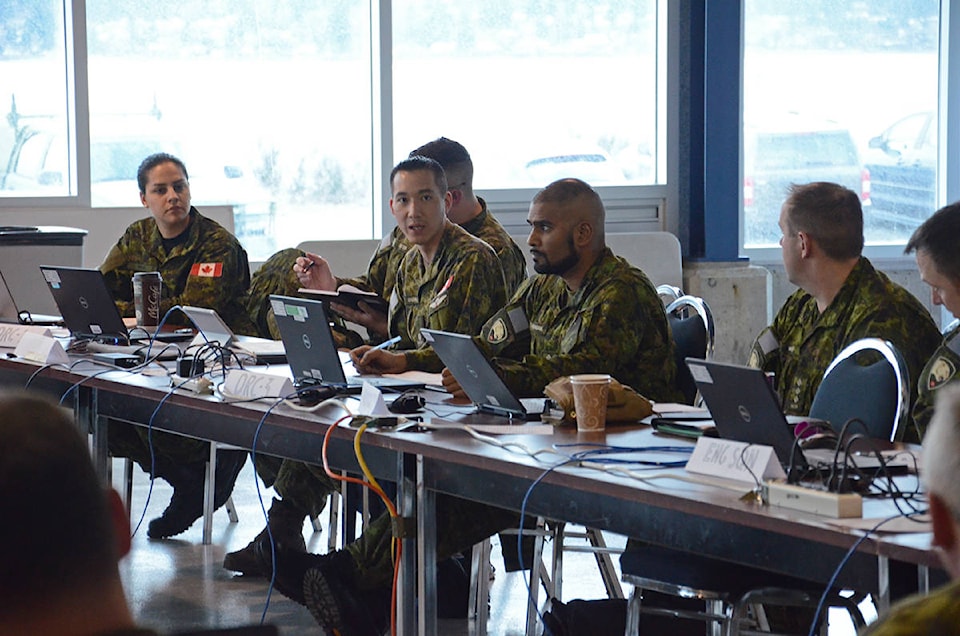The military, along with providing defence, is there to assist in times of trouble. To do so though, they need to be ready.
On Saturday, at HMCS Quadra at Goose Spit in Comox, army leaders for 39 Canadian Brigade Group (CBG) conducted an exercise called ‘Cougar Ready’ aimed at how they would respond to an emergency scenario.
“What we normally do is an earthquake scenario,” Lt.-Col. Jim Julien said. “The whole purpose of these exercises is [to] actually prepare us for any scenario where we need to respond to help Canadians…. The structure that we would deploy is similar regardless of activity. Obviously, our tasks would be different.”
In this case, they worked through a tabletop exercise involving a wildfire in B.C. Spread through 11 army reserve units across the province, 39 CBG is made up of more than 1,800 soldiers. On Saturday, the leaders gathered to work through a scenario in which they are not the lead agency responding but working with other organizations.
“What we’re exploring here is the nuances of not being the organization in charge, and how we would lean on local leadership to help communicate with the folks that are coming through. The RCMP would be doing traffic control,” Julien said.
He added that the army would get involved in situations where local resources are becoming overwhelmed by the scale of the operation.
“It is a supporting function,” he added. “The army does not come in and take over.”
In this case, 39 CBG was tasked with generating a territorial battalion group, a rapidly deploy-able team of army first responders. The members came from different parts of B.C., including places as far away as Prince George, and they do these tests at locations around the province. The main objective is to gauge these reserve leaders’ abilities as decision-makers. It also gives them an opportunity to work together, so they know each other when responding for real.
In the scenario, the work surrounded a community distribution point. The leaders worked through logistics, for example, concerning supplies at a local shopping centre in the Comox Valley, and how to distribute food or water to provide support for people evacuating or who need emergency shelter.
“It’s very similar to what we would do in the field at what we call a commodity point,” Julien said.
RELATED STORY: 450 Canadian troops support wildfire fight
RELATED STORY: Canadian Forces remain ‘last resort’ for B.C. wildfire response: province
With the choice of wildfires, they had the chance to work on an emergency situation that is becoming more prevalent in summertime. A situation like the fires in Fort McMurray, Alta., in 2016 provides the most obvious example of recent wildfires forcing a large-scale evacuation of a community, but B.C. has seen its share of incidents in recent years.
“This is what we’ve been doing, so it would make sense to focus on the stuff we’re being asked to do in more recent history,” Julien said.
After the actual exercise, they followed it up the next day with a debriefing to go over lessons learned, to make sure they are prepared in the event of a real emergency.
“We don’t have to relearn those lessons in the real world,” Julien said.
mike.chouinard@comoxvalleyrecord.com
Like us on Facebook and follow us on Twitter.
